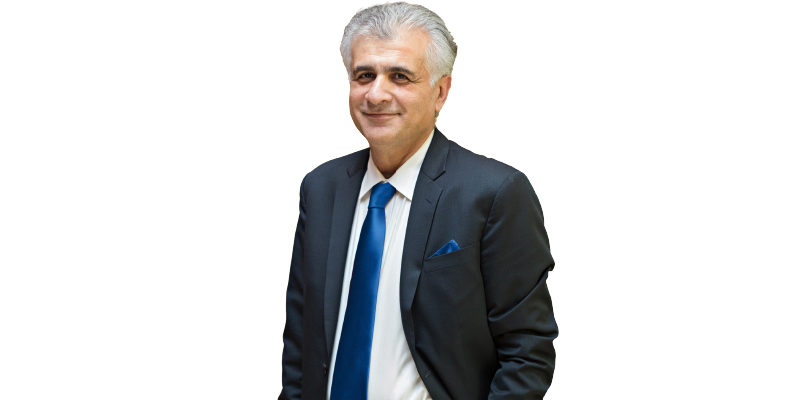In line with its strategic goal to bring fast and secure services to its customers Gulf Air Director of IT Dr. Jassim Haji discusses how the company revamped its wireless network infrastructure to meet growing business demands.

In the airline industry, safety and operational efficiencies are top priorities. As one of the region’s major airlines, Gulf Air also takes safety and efficient management of its network seriously.
Founded in the early 1950s, the carrier is one of the oldest aviation companies in the region. In the 1970s, the government of Bahrain, the State of Qatar, the emirate of Abu Dhabi and the Sultanate of Oman purchased the majority share of the company, giving each government partial share in Gulf Air. For over five decades the company has thrived and grown its network, and in 2007 the government of Bahrain claimed full ownership of the organisation. Today, the airline flies to 41 destinations in 23 countries across Africa, Asia and Europe.
As the airline continues to grows it has also been quick on the uptake when it comes to new technology. “IT plays a vital role in Gulf Air’s operations and business strategies, and we consider it as one of the main drivers for success,” says Dr. Jassim Haji, Director of IT, Gulf Air.
Over the last few years, Gulf Air has invested heavily in its IT initiatives especially on projects involving mobile and cloud technologies. “We utilise cloud technologies across various areas within the organisation, including business operations, Big Data, e-Learning, and airport connectivity,” says Dr. Haji. “We have a hybrid cloud solution that supports our internal platform as well as third-party applications that are instrumental in the wireless transfer of data to and from our aviation partners like IATA.”
Moreover, the airline has also rolled out initiatives that have enabled them to provide services using mobile technologies. “Our strategy is centred around providing novel and agile services to our customers,” he says. “Our check-in agents make use of tablets to perform check-in activities for the passengers on-the-go. This kind of service helps to avoid space and counter limitations in airports, which expands the airport capacity, reduces waiting time and avoids flight delays. Aircraft engineers have also been provided with tablets containing technical manuals to conduct flight checks, maintenance and repair activities in the field.”
To optimise their use of cloud applications and provide even better mobile services to their customers, Gulf Air initiated a project to revamp its wireless access management system. “Our network infrastructure is the backbone of our entire operation so boosting its performance and securing it is paramount for the business,” explains Dr. Haji.
In January 2016, the team conducted a feasibility study where vendors were invited to propose different solutions for the new system. After an extensive selection process, Gulf Air worked alongside the chosen vendors to upgrade its wireless network while taking into consideration the airline’s current IT infrastructure and how it will be in compliance with its organisational policies and strategies. Moreover, it was also established to meet the requirements for ISO27001 and PCI DSS certifications.
After six months of rigorous market research and evaluation, Gulf Air proceeded with the roll out of the solution until it was fully deployed in October this year. According to Dr Haji, the biggest bottleneck the company had in its wireless network was bandwidth and coverage. “Users in certain parts of the office, airport or hanger areas were not able to connect and perform their tasks seamlessly,” he explains. To address this, Gulf Air started off with the upgrade of its wireless solution to Cisco’s latest 802.11ac technology. “The solution from Cisco provided us with the ample bandwidth and throughput to support heavy operation applications that are used within the enterprise.” The improved connectivity also enabled Gulf Air to provide the required access across operations in its headquarters, the airport and its outstations.
Apart from providing customers and employees with speedy and reliable connectivity, data security is another issue that Dr Haji and his team wanted to address through the project. “We have always been proactive when it comes to our IT. That’s why, before any security incident occurs, we want to ensure that we are ready and we have best security solutions in place,” he says. In this regard, the airline implemented solutions to secure its access points against intrusion attempts. “We have deployed mobile devices management (MDM) solutions to facilitate the services we have that are accessible via mobile devices.” The company also upgraded its Application Delivery Control from F5 Networks to accelerate web traffic and provide secured central access for Gulf Air’s outstations and relative airports. Additionally, the airline also deployed TrendMicro’s TippingPoint to filter the wireless traffic within the organisation and prevent possible attacks. “The wireless access management solution as a whole was built to establish controls to protect the transmission of sensitive information, authenticate and authorise users and block intruders,” says Dr Haji. “The upgrade has enabled us to protect all data transmitted via mobile devices.”
Because of Gulf Air’s strong relationships with Cisco, F5 and TippingPoint, Dr Haji highlights that they have not experienced any issues during the migration to the new system. “The support we received from vendors was excellent,” he says. “In addition, the implementation was carried out by well-trained and highly certified professionals within Gulf Air’s IT team.”
Since the system is being utilised throughout the whole of Gulf Air’s operations, it has been customised to cater for different functions within the business. “We conducted several training sessions for the staff and other stakeholders of the company as to how they can best use the solution,” says Dr Haji. “It was definitely well-received by everyone within the organisation.”
Furthermore, Dr Haji highlights that the implementation of the upgraded wireless access management system led to the further success of their Electronic Flight Bag (EFB) that was launched last year. “Traditionally, pilots would have to bring along a big stack of documents that includes flight plans, security checklists, flying hours reports and so on. This is mandated by the Civil Aviation Authority and International Civil Aviation Organisation (ICAO),” he explains. “We have managed to digitise this data and have provided our pilots with a tablet containing all of these documents. With the improved wireless access management system, accessing the EFB is now better and more secure than ever.”
The system was built using Gulf Air’s hybrid cloud. Dr Haji says that the service has been provisioned over the Internet as a Platform-as-a-Service, and a few projects are already underway to further leverage its huge potential.





